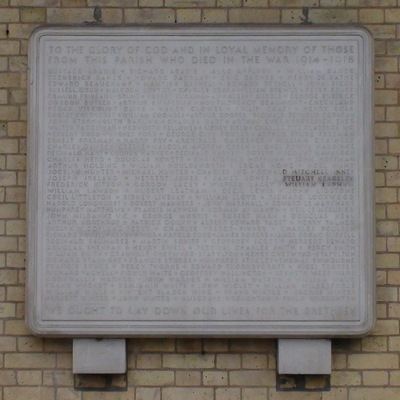Major Granville Joseph Chetwynd Stapylton was born on 11 September 1871 in Blessington, County Wicklow, Ireland, the second child and eldest son of the four children of Granville George Chetwynd Stapylton (1823-1915) and Lady Barbara Emily Maria Chetwynd Stapylton née Leeson (1831-1919). His father was to become a Lieutenant General in the British Army.
The 1881 census shows him living with his parents, his elder sister Barbara Margaret Chetwynd Stapylton (1866-1955) and younger surviving brother Bryan Henry Chetwynd Stapylton (1873-1958), two nursemaids, a cook, a housemaid and a footman at 95 Belgrave Road, Belgravia. His youngest brother, Richard Cecil Chetwynd Stapylton (1876-1878), had died aged 2 years at 95 Belgrave Road on 27 June 1878.
He joined the army on 13 February 1891 and the 1891 census shows him as a 2nd Lieutenant in the Royal Artillery stationed in the barracks at Dover Castle, Kent. He was promoted to Lieutenant on 13 February 1894 and to Captain on 13 February 1900 and served in the South African War in both O Battery Royal Horse Artillery and 66th Battery Royal Field Artillery, for which he was awarded the Queen's South Africa Medal with five clasps: Relief of Kimberley, Paardeberg, Dreifontein, Johannesburg & Diamond Hill, and the King's South Africa Medal with the 1901 and 1902 clasps.
On 17 February 1906 he married Elizabeth Grace Lethbridge (1877-1930) in St Peter's Church, Eaton Square, Pimlico, where the marriage register shows him as a Captain in the Royal Field Artillery living at 25 Eaton Place, Pimlico whilst his wife's address was given as 9 Chester Street, Pimlico. Their daughter Barbara Mary Elizabeth Chetwynd Stapylton (1907-2001) was born on 25 January 1907 in Cheriton, Kent. He served for a time in the Royal Horse Artillery, but Army Lists for 1907 show that he was the Captain of the 76th Battery, Royal Field Artillery in Bloemfontein, South Africa. Their elder son, Granville Richard Chetwynd Stapylton (1909-2006) was born on 30 August 1909 in Gosforth, Newcastle upon Tyne, Northumberland and the 1911 census shows him a a Major in the Royal Field Artillery living with his family at Court House, Lower Woodford, Salisbury, Wiltshire, with six servants comprising of a nurse, a cook, a parlour maid, a nursery maid and two Drivers from the Royal Field Artillery. Their younger son, Christopher George Chetwynd Stapylton (1913-1988) was born on 31 January 1913 and baptised on 6 March 1913 at All Saints Church, Lower Woodford.
Joining the British Expeditionary Force, he entered France on 19 August 1914 and whilst attached to 130th Battery, 30th Brigade, Royal Field Artillery, he was killed in action, aged 42 years, on 25 August 1914 at Solesmes, France. He was buried near where he fell but on 17 December 1920 his body was exhumed and reburied in Plot X, Row B, Grave 4, at the Romeries Communal Cemetery Extension, Rue De Solesme, Romeries, Nord, France.
Probate was granted to his widow on 11 November 1914 and his effects totalled £4,055-5s-6d. His widow was subsequently sent his army effects totalling £60 on 2 December 1914 and the end of the war she received a War Gratuity of £60 on 9 September 1919.
He was posthumously awarded the 1914 Star and Clasp, the British War Medal 1914-1918 and the Victory Medal. He is also commemorated on a plaque in All Saints Church, Middle Woodford, Salisbury and on the Commonweath War Graves Commission's website.
This man's father, Lieutenant General Granville George Chetwynd Stapylton, also died during WW1 but from old age - he was 92. These two Chetwynd Stapyltons are related to Henry Miles Chetwynd Stapylton (1887-1915), but quite distantly. The St Peters memorial gives their names as 'Chetwynd-Stapylton' but none of them utilised a hyphen, treating Stapylton as their surname. Our picture source website has some more information.
Credit for this entry to: Andrew Behan.








Comments are provided by Facebook, please ensure you are signed in here to see them